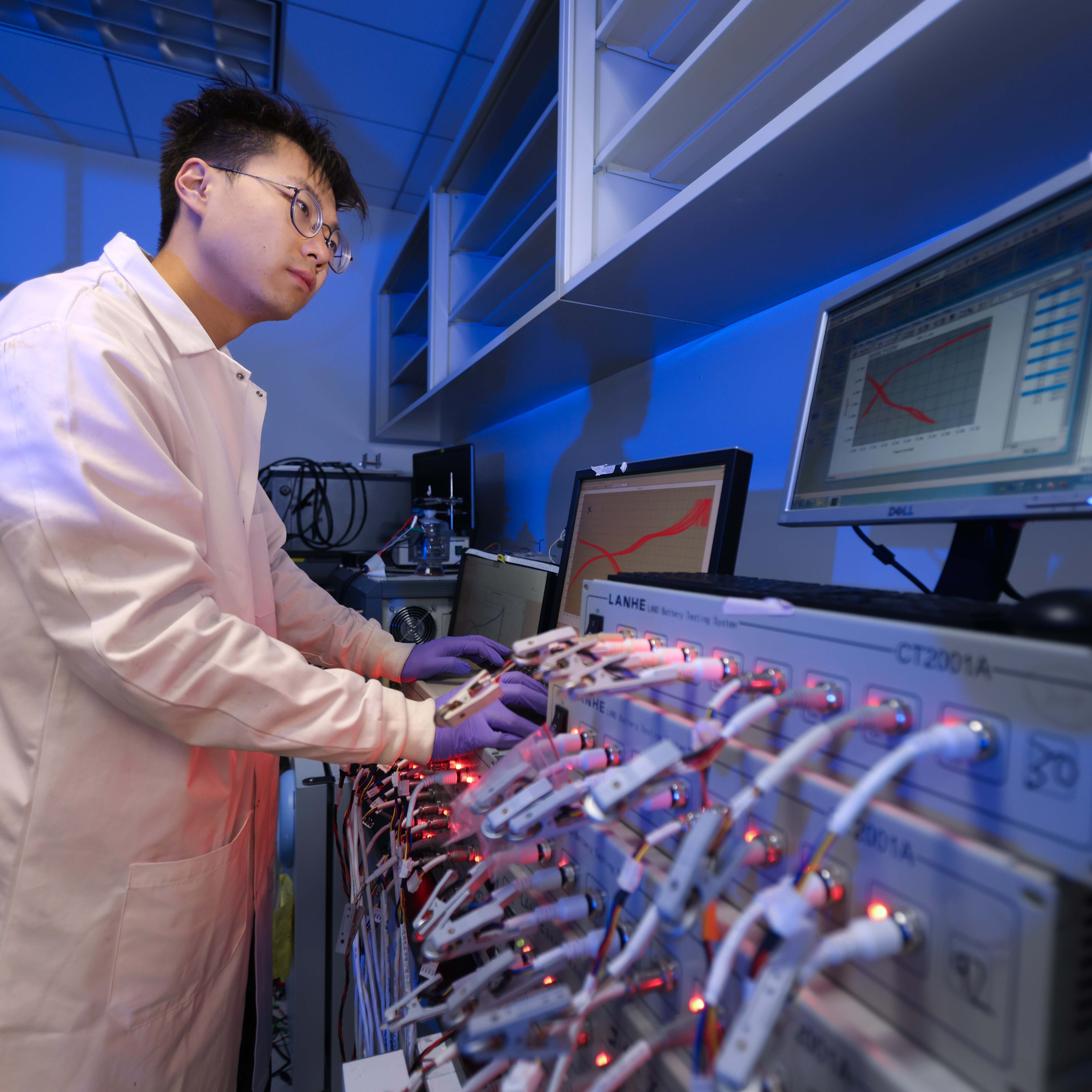News Story
Liu Wins NSF CAREER Award

ChBE Assistant Professor Dongxia Liu.
A proposal to use a new ceramic membrane to improve the conversion of methane into alternative fuels has earned University of Maryland Assistant Professor Dongxia Liu (Department of Chemical and Biomolecular Engineering [ChBE]) a 5-year, $400,000 National Science Foundation Faculty Early Career Development (NSF CAREER) Award.
Methane, the main component of natural gas, can be converted into C2 (diatomic carbon)-based gases such as ethylene and ethane, which are used to produce commodity chemicals, polymers, and alternative fuels. It has the potential to play a significant role as a raw material for fuel and chemical production, reducing our need for petroleum.
As a resource, Liu says, methane is abundant and much cheaper than petroleum. This should be a winning combination, but converting methane into usable products is a problem.
“The price of petroleum-like chemicals derived from methane is high because we do not have a cheap, efficient process for converting methane into these products,” she explains, “so we cannot use it directly as an energy source in the near future.”
As a result, she adds, a lot of methane goes to waste. “When we drill for oil, we also get methane, but most of the methane produced by oil rigs, especially in remote locations, is burned off instead of used. That pollutes our environment by releasing carbon dioxide into the atmosphere.”
When the methane that does get used undergoes the oxidative conversion process that converts it into C2 products, two reactions take place. The first transforms the methane into the desired gases, such as ethylene and ethane. These products, however, are unstable under reaction conditions, so they react a second time, becoming carbon monoxide (CO) and carbon dioxide (CO2) gas, which are undesired byproducts. Even under the best conditions, over 50 percent of the potential C2 products derived from methane will be lost during this second reaction.
Liu explains that the challenge to efficient methane conversion lies with the critical control of oxygen (O2) concentration and catalyst activity in the reaction chamber’s membrane, which stimulates the process.
“What we need is a proper amount of O2 in the reactor,” says Liu. “If there is too much, the second, unwanted reaction happens; and if too little, the methane conversion is low so the process is not efficient.”
The reactor’s membrane is responsible for both permeation, the process by which oxygen from the atmosphere is added to the reactor, and methane activation, the reaction that produces C2 gases. In an ideal situation, it would be capable of performing comparable levels of permeation and activation to ensure the speed and output required for industrial production of C2 products. Currently, no available membrane material can create the C2 gases as fast as it permeates O2. This leaves the catalyzed ethylene and ethane exposed to excess oxygen and vulnerable to the second reaction that converts them to CO and CO2.
Liu’s research group is developing a new type of catalytic membrane based on a biomineral called hydroxyapatite (HAP), a major component of teeth and bones. The new material is reactive-separative, meaning it is both a catalyst for the reactions and capable of permeating O2 in controlled concentrations into the reactor. Liu believes a perfected HAP-based membrane could perform each task at a comparable rate, wasting less methane, preventing the production of greenhouse gases, increasing product yield, and reducing the energy required to obtain the desired results. The technique used to create the membranes allows Liu’s team to control their structure at the nanoscale, so they can also be tuned (adjusted or customized) for different reaction conditions and products.
“The mastery of methane conversion chemistry and technology is essential to provide value-added alternatives to petroleum-based chemicals and fuels,” says Liu. “This research will stimulate new material discovery and technique development that can impact the future of the world's energy and chemical supplies.”
The NSF CAREER program supports the career development of outstanding junior faculty who most effectively integrate research and education within the goals and missions of their programs, departments, and schools.
Liu’s fellow ChBE faculty member, Assistant Professor Jeffery Klauda, won an NSF CAREER award in 2012.
For More Information:
Visit Professor Liu's web site
Visit the NSF CAREER Award web site
See Professor Liu’s proposal, “Surface Crystallization of Reactive Oxygen Permeable Hydroxyapatite-based Membranes for Direct Methane Oxidative Conversion,” online
Published December 12, 2013









